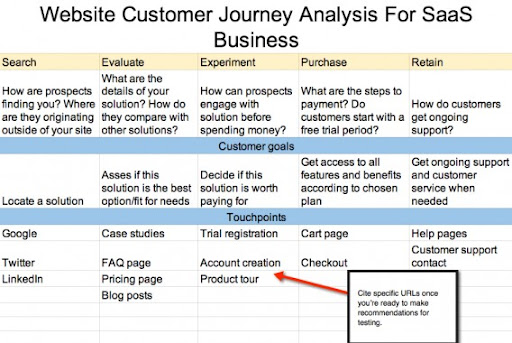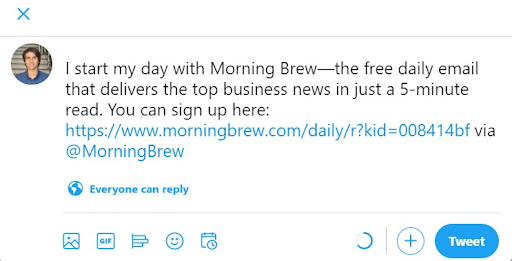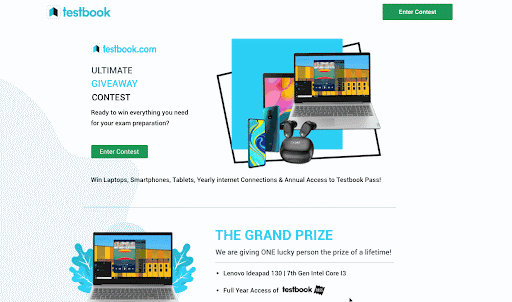Positive reviews are effective in building trust with your customers. 98% of consumers surveyed by BrightLocal read customer reviews for local businesses. 49% of consumers say they trust online reviews as much as personal recommendations from friends or family.
Fuel Business Growth with Customer Feedback 🔥
Collect real-time, in-moment feedback at all touchpoints in customer journey and leverage feedback insights to transform customer experience.

However, you probably know from experience that people rarely leave reviews on their own even in cases where you’ve gone above and beyond. The reasons might be that people are dealing with more businesses than before, or the fact that they don’t consider online reviews effective at all.
Whatever the reason, you know that you need to be proactive in getting positive customer reviews. In this article, I’ll cover 5 tactics to encourage your customers to share positive reviews online.
1. Provide a great customer experience
What if you could set “positive review generation” on auto-pilot? What if you could start the day seeing a happy customer tagging you on social media, sharing the great experience they had with your product without being encouraged to do so?
I bet nothing could brighten a marketer’s day better. As marketers, we know the value of positive customer sentiments. And the best way to have them is to provide a great customer experience.
-
What’s customer experience?
Customer experience is system companies use to track, oversee, and respond accordingly to all customer/business interactions, so companies exceed customer expectations to increase customer satisfaction, loyalty, and advocacy.
The focus of this definition is on “all customer/business interactions.” So in order to provide a great customer experience, you need to make sure you provide maximum satisfaction during your customers’ entire journey not just during the purchase stage.
The first step you should take to provide a great customer experience is mapping out your entire customer journey. Improving customer journeys can boost revenue by up to 15% and increase customer satisfaction by 20%.
-
Map out your customer journey
To provide a great experience consistently you need to anticipate every possible touchpoint your customers are going to have with you, then try to provide the best experience possible.
Analytics is an integral part of this process. It’s necessary to rely on real-time customer data rather than just some guesswork when figuring out your customers’ journey.
Knowing this data could help businesses to be 33 percent more accurate in predicting customer churn and satisfaction.
 Your customers’ journey could be divided into three general phases. This journey defines how customers tend to behave while interacting with you:
Your customers’ journey could be divided into three general phases. This journey defines how customers tend to behave while interacting with you:
1- Pre-purchase:
How do they get to know you? For B2B this could be experiencing a pain point in their work and searching for solutions. Asking friends (word of mouth) and searching online (Google, social media, review sites) are some of the ways for them to get started. Most companies rely heavily on organic traffic from Google for their website traffic. Using an SEO analyzer for auditing your web pages is necessary at this stage.
A good product development strategy could help a lot in planning out some product-related aspects of your customer’s journey such as defining a product roadmap, user journey mapping, customer research, product road mapping, feature prioritization, managing sprints, analyzing product data, process mapping, and managing product releases.
2- Purchase:
What convinces your customers that you’re the right fit for them? What’s your unique value proposition? A common touchpoint here might be your app, homepage, product description page, your pricing page, or your contact page. So make sure that you optimize user experience (UX) across different touchpoints.
People typically have lots of questions and concerns before making a purchase from you so your sales and customer support agents play an important role here. Make sure you provide a satisfactory experience in this phase.
3- Post-purchase
By now, you’ve done a great deal of work optimizing touch points such as your social media channels, your website, payment pages, shipping and delivery of products, etc. But your customers’ journey does not end with the purchase. As a matter of fact, you could say that the real work begins here.
Now the first step in providing a great customer experience in the post-purchase phase is providing a great onboarding experience. Customer onboarding is the process of showing your customers how to use your products effectively for the first time. What should they keep in mind before using your products? What should they do if they run into issues? Customer onboarding software could help you a lot in designing a good customer onboarding journey map and getting feedback from customers.
It’s also extremely important to tackle customer issues and complaints the right way. According to Chatra’s guide to customer loyalty, “for every customer that complains to you in your support inbox, 26 remain silent”. In other words, you’re only hearing around 4% of your customers’ complaints. Providing a great customer experience after purchase demands a comprehensive understanding of your customers’ needs.
2. Engage with your audience
Engaging with your audience is a great way for eliciting positive reviews. Addressing your audience’s pain point by sharing great content, taking part in conversations in your niche, and responding to customer queries in a timely manner are all effective ways to encourage positive customer sentiments.
Social media has a special place here. Make sure you have a good social media strategy in place. Here are some useful tips:
-
Use visuals:
Visual content typically has quite high engagement rates. Images with photo effects(static or GIF), flipbooks, and videos should have a special place in your marketing strategy. Facebook posts with images are said to have 120% more engagement than an average text post.
A social media wall is a digital display that aggregates social media content from various platforms such as Twitter, Facebook, Instagram, and YouTube. It is a powerful tool for businesses to enhance visual effects and engage their audience with user-generated content. It is a powerful tool for businesses to enhance visual effects and engage their audience with user-generated content. Brand videos are extremely important when it comes to connecting with you audience.
6 out 10 people prefer to watch online videos than TV. Results of a survey by Biteable show that 60% of businesses use video as a marketing tool and 61% of marketers believe that video is a very important or extremely important part of their marketing strategy. For example, SAAS companies walk users through the product and show how everything works, product tours can help reduce any confusion or uncertainty that users might feel. Highlight your product features and benefits to users to answer the FAQs to minimize the number of support requests. You can also compile images or use a collage maker to show customers different aspects of your product.
-
Form partnerships:
Growing on social media without others’ help is rather impossible these days. You need to take advantage of other people’s reach to drive more engagement to your content. Get to know people who are active in your niche, find their correct email address, and reach out to them with mass email services or social media to form partnerships.
As Tony Restell explains:
“… the most important thing to know about the engagement is that it's reciprocal. That's to say that only a small part of whether you get engagement on social media is down to what you post. It's mostly driven by whether you have an army of people out there who want to engage with your posts - because you yourself have previously engaged with theirs, or they've seen you engaging with the posts of others in their feed.”
You can share each other's content, engage with each other's posts, or recommend each other’s products or services if you find them useful for your audience.
Some of these people could have a large number of followers or have great engagement with their posts. Forming partnerships with these people could help amplify your engagement.
-
Improve your copy:
Without a clear and interesting copy, your social media posts could fall flat. Headline copy plays an important role here. It is probably the first thing everybody notices when they initially look at your post. So make it as interesting as possible. To make it readable and interesting, try to rephrase the original headline multiple times. This will help you to get new versions of your post headline without affecting its main idea. Also through social media management strategies, you can analyze and incorporate in those posts some headwords that customers frequently search which will attract and increase the interaction of customers with your page.
Speak the language of your audience and make sure you’re sharing what they care about.
Spending time to make your subject lines eye-grabbing could go a long way. Take a look at some of Buzzfeed’s headlines with the most clicks:
3. Ask sincerely
If the first two tactics mentioned above are indirect ways to encourage positive customer reviews, the next three are meant to increase their effectiveness intentionally. The simplest way to do so seems to be asking sincerely. Here’s how you could do so.
-
Make it easy
As a rule of thumb, you need to make it extremely easy for your customers to write positive reviews. In many cases, people would be happy to leave a positive review for you if it is as easy as a few clicks.
One way to do so is to include social sharing buttons at the end of your emails or posts. You can also add a template with appropriate tags and hashtags to make it even easier for them to share a positive review on social media.
MorningBrew includes social sharing buttons with templates that only need a click to be posted on social media. They also have a referral system that rewards subscribers for a certain number of referrals.

-
Ask after a successful interaction
Not all review requests have the same effect. It makes perfect sense that you’ll have more success if you ask for reviews after a successful interaction with your customers.
These successful interactions could be successfully shipping their products, resolving their technical issues, sending them rewards, holding events such as seminars, physical, live, or hybrid events, etc.
Events could be considered successful interactions because of the trust, authority, and impact they have on your audience. You can send them a professional email after one of these interactions and ask them to do you a favor and share their positive experience on social media or review sites.
If you’re using an automation tool the process is extremely easy. Simply create a workflow that contains a simple review request right after a purchase or a few weeks after it. Moosend is a great automation tool and has workflow features. Check out this Moosend review to see if it’s the right fit for you.
4. Reshare your current positive reviews
To increase the effectiveness of your current positive reviews, you can reshare them on social media. This could set an example for other customers to share their experience with your brand as well. Check out your mentions on social media and other third-party sites. Take the positive reviews and use them as testimonials on your homepage or in your content calendar.
-
Third-party review sites
In many cases, customers are more likely to leave reviews on third-party review sites such as Yelp or Amazon. It would be great if you can direct this potential to social media where it can be seen more often and create more buzz. You can share these testimonials and reviews on social media or other platforms. Content distribution software tools can help you a lot in this process.
-
Encourage UGC (User-Generated Content)
Another kind of positive review that you can reshare frequently on social media is user-generated content. Although this kind of content might not be considered reviews in the full sense of the word, the positive sentiments they produce do have the same effect.
People trust recommendations from individuals more than a brand’s self-serving claims. So if you’re active on social media, you can’t ignore the value of UGC. Ask questions, use hashtags to create buzz, run quizzes, or give rewards to encourage UGC.
User-generated content has the potential to have great engagement and get shared multiple times.
The famous #PutACanOnIt contest by RedBull is a good example of a successful UGC campaign. They encouraged people to post creative pictures with Redbull cans.

5. Hold contests with giveaways
By now you’ve entered the realm of user-generated content: you’re encouraging your audience to create content showcasing the use of your products and sharing positive reviews. To accelerate this process, you can hold contests and reward customers with giveaways.
There are various ways to take advantage of contests and giveaways. You can devise contests to grow your email list, drive traffic to your website, create pre-launch buzz about your products, or encourage user-generated content across social media.
You can also plan a more complicated milestone contest to do all of the above in one run.
Testbook devised a rather comprehensive milestone contest trying to create social media buzz about their brand, increase awareness about their learning community, grow their email list, and drive traffic to their new payment plan.
They offered a number of valuable rewards (mostly electronic devices such as laptops or smartphones) to the people who gained the highest scores in their contests.

The results they gained from their campaign were amazing.
Apart from the buzz they created around their brand and the huge influx of positive UGC, they generated 325,007 pageviews, got a huge number of referrals (50% of participants referred +1 person), got a conversion rate of 18% on their landing page, and generated 57,873 new email leads.
Take advantage of contests to encourage positive reviews on social media and select giveaways that are valuable for your audience.
To wrap it up:
Positive reviews indeed have a special effect on your conversion rates. Using them on social media increases their effect because of the exposure they get. In this article, I proposed 5 ways to encourage positive reviews on social media.
Providing a great customer experience and engaging with your social media audience are two of the subtle ways to get your customers to share positive reviews while asking them sincerely, resharing your current positive reviews from third-party sites, and holding contests to encourage positive user-generated content are some of the tactics that demand active planning and execution.
.png)



.jpg)




.png)

.jpg)